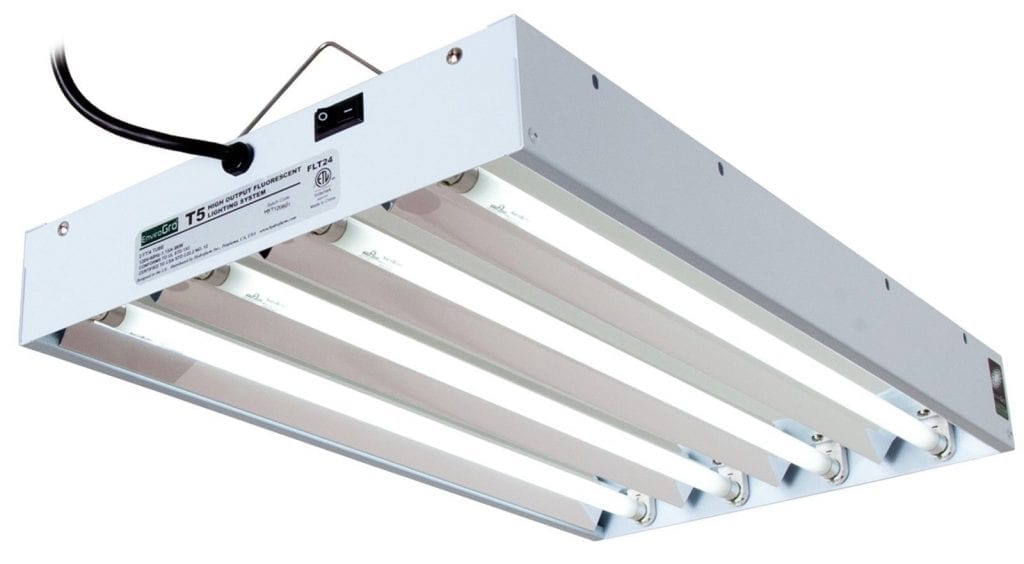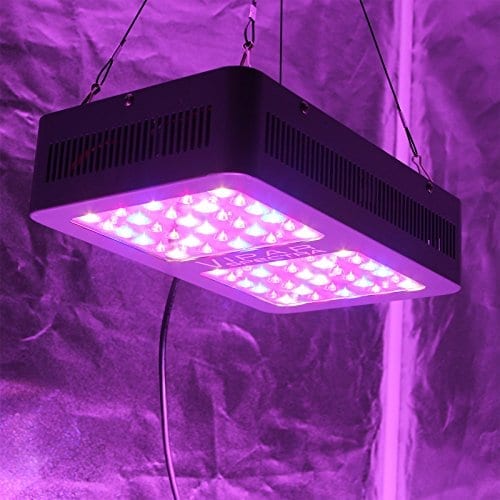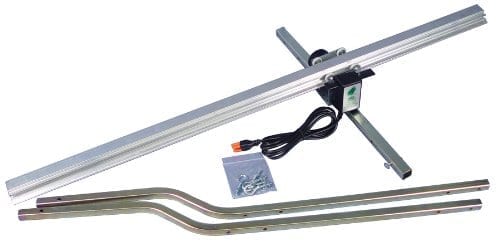If you’re just starting out with indoor growing, you can understand how hard it is to wrap your head around the complexities of grow lights. Hopefully, this guide will help you to make the right choice in different types of grow lights.
Every grow light has a specific use and can vary greatly in terms of their benefits and disadvantages. That is why you should know about the different types of grow lights that you can find on the market:
1. Fluorescent Grow Lights
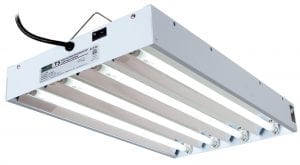
Fluorescent grow lights are very popular in the grow light market. This type of grow ligt is quite different from regular household grow lights because their tubes are usually calibrated by diameter with the ‘T’ representing 1/8th of an inch.
For instance, T5 means 5/8th of an inch. Fluorescent grow lights are cooler than other grow lights, making them ideal for the propagation phase of your crops.
Pros
- Covers a large surface area
- Affordable
- Long-lasting
- They don’t use a lot of electricity
- Good choice for short spaces
Cons
- Not ideal for flowering and vegetative phases
- Smaller yields per watt than other types of lights
2. High-Intensity Discharge (HID) Grow Lights
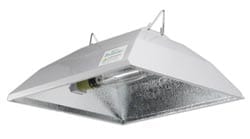
Let’s talk about some other types of grow lights: HID grow lights involve large huge bulb systems that produce light through ignition within the bulb. There are three different types of HID grow lights: high-pressure sodium (HPS), metal halides (MH) and hybrids of the first two.
HID grow lights use dual tungsten electrodes that arc an electric current between them to ignite the gas in the bulbs. HID systems include a bulb, ballast and reflective cover, which altogether increase the light supply to different gardens
Pros
- Adjustable lighting
- More light intensity than fluorescent lights
- Can be used without ballast replacements
- Most efficient type of grow light (highest yield per watt)
Cons
- Can burn plants
- Require replacements over time
- HID bulbs produce a lot of heat
- Require additional equipment like the reflector and ballast
3. Double-ended (DE) Grow Lights
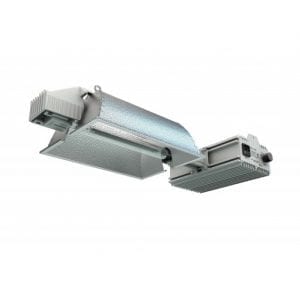
DE grow lights are another kind of HPS lights that connect to each end of a ballast instead of to just one ballast port. While a single-ended light loses efficiency after 10,000 hours of use, DE lights maintain 90% percent efficiency with the same usage. DE lights are also slimmer than single-ended ones so that more light is provided.
Pros
- Efficient
- Slim design
Cons
- Can burn plants
- Efficiency is reduced through nitrogen contact
4. Ceramic Metal Halide (CMH)/Light Emitting Ceramics (LEC)
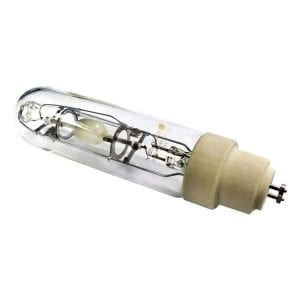
CMH and LEC lights belong to the single-ended category. They can be substituted with each other since they come from the same family.
LECs and CMHs comprise of a ceramic element to give a higher intensity of light that can actually mimic natural sunlight. The addition of insulation also ensures control of the heat output so that crops aren’t burned. LEC lights are able to produce enough light to support vegetative and flowering stages, which is a great plus.
Pros
- Longer-lasting than DE lights
- Mimics natural sunlight
- Supports all growth stages
Cons
- Only uses magnetic ballasts
- Expensive
- High UV ray exposure
- Produce a lot of heat
5. Light-Emitting Diode (LED) Grow Lights
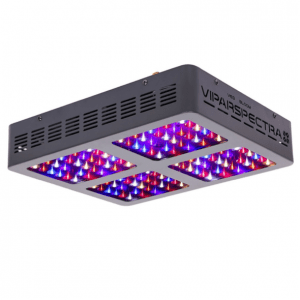
LED grow lights are part of the newest grow light technology introduced to the world. LEDs are able to produce more light per watt compared to other conventional kinds of grow lights. They are energy-efficient since they conserve power even over long hours of usage every day. LEDs work at cooler temperatures so burning of crops and gardens is avoided as well.
While LED lights have higher initial costs than other grow lights, they make up for it with better efficiency, growth, energy consumption and maintenance.
Pros
- Energy-efficient
- Lowest power costs of all the grow light types
- Long-lasting
- Better long-term investment
- Higher light production
- Large range of the light spectrum
- Often adjustable light for each stage of plant growth
- Easy to use
- Does not need frequent replacements
- Small lights can be used without any additional equipment (plug and play)
Cons
- Larger investment than other grow lights
- Does not efficiently help in the flowering phase
- Sometimes needs additional equipment including reflectors
- Although cooler than most lights, LED still produces heat. Especially with larger lights you will need additional equipment
- On average these lights have a slightly smaller yield per watt than HPS grow lights
Summing up the different types of grow lights
There are different types of grow lights out there and every type has its pros and cons. For small growers (1/2 to 1 ounce of Cannabis per month), LEDs will definitely be your best choice. If you are a bigger grower you should definitely look into the newest models of LED grow lights. Older LED grow models will not outperform HPS grow lights. Nowadays all the new LED grow light models outperform the HPS because they often don’t need extra setup and are super low on electricity.
Table of contents



